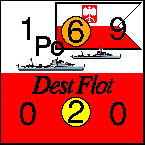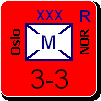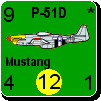fiveof6
Posts: 23
Joined: 9/3/2007
Status: offline

|
quote:
ORIGINAL: micheljq
Be careful with the maps, it would be best to have maps from 194x decade. Some geographic aspects may have change since those years. Cities have expanded, ports may have been completely reshaped. Forest & jungles may have disappeared, since they disappear at an accelerated rate all over the world. Even deserts may have expanded.
The date when the map was done is very important or else the information may be irrelevant with WW2 era.
You are correct regarding things like changing forests and deserts, railroads, cities, and port expansion. But mountains are mountains no matter what year it is. My posts are based on actual observations and picturing a military unit moving through a hex over a three month period.
I agree that map changes should be slow, but if one asked anyone if the terrain around Mombasa is comparable to coastal Norway or British Columbia, then you would be laughed at. An amphibious invasion or any defensive benefit in coastal Kenya would not be complicated by mountains. Since there is no "rough" terrain option, the next closest dominating feature should carry the hex. In this case moving the mountains west solves the issue. The rough terrain five miles from Mombasa would not slow a tank or foot soldier. The mountains 50 miles inland would.
An earlier post stated said it is very difficult to change coastal terrain. If that is the real reason, then I understand. However, so much time has been put into the project to get it right, it seems a shame to let an obvious fix wait.
Regarding the terrain around Nairobi, it may be higher in elevation, but it is not a jagged mountain range. Terrain in the hex north of the city is ragged and deserving of the mountain label. In Nairobi itself, one must look all the way to the horizon to even realize they are near mountains at all and they actually just look like gradual hills. There would be no defensive mountain benefit in Nairobi. There are the Ngong Hills (from "Out of Africa" fame) in a small part of the Nairobi hex, but it is not the defining terrain. There are woods in the north part of the hex that gives way to range land (and lots of today's safari tourism) in the southern part.
If one is trying to acknowledge the Rift Valley by keeping Nairobi mountains I understand that too. While it may be steep, a good 1940s survey team and a bulldozer would have no problem moving west from Nairobi into the valley. Since Alpine only works between two mountain hexes, WiF is caught by its scale.
Keep up the good work folks, I can hardly wait to make my WiF purchase.
Respectfully,
Kevin
http://www.despair.com/tradition.html - This just made me laugh.
|
 Printable Version
Printable Version

 , don't get Patrice started or he might start naming every oasis in Africa.
, don't get Patrice started or he might start naming every oasis in Africa.




















 New Messages
New Messages No New Messages
No New Messages Hot Topic w/ New Messages
Hot Topic w/ New Messages Hot Topic w/o New Messages
Hot Topic w/o New Messages Locked w/ New Messages
Locked w/ New Messages Locked w/o New Messages
Locked w/o New Messages Post New Thread
Post New Thread